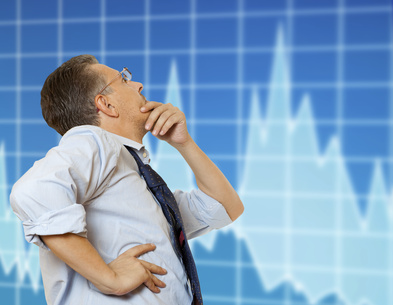You crafted a technical trading strategy and you back tested it to death. The results are positive. You begin to paper trade the strategy and find that if you adhere to the rules set forth in your trading plan, then you achieve very similar results as those obtained from back testing.
But then you switch to your real money, and all of a sudden, at the first sign of a drawdown, your well-crafted method goes out the window, and you are a crazy emotional wreck making illogical and irrational decisions.
Sticking to your trading plan in the face of adversity and psychological factors isn’t easy, but it is inevitable losing trades are going to happen. Period. Flip a coin thousands of times, and you’ll find streaks where one side appears many times in a row. Even with a coin weighted 65/35 in favor of success, you will still undoubtedly experience bad spells.
The key is that in addition to your tested technical strategy you need to have a realistic handle on what you can afford to risk so you can stomach losing trades. That means knowing what percentage of your account you are risking per trade.
For stock traders, a standard industry guideline is the 2% – 8% rule. You should never risk more than 2% per trade, and you should never have more than an 8% loss for the month, even if it is in week one, all trading must stop.
The 2%-risk rule applies to all of the cash in your account plus open equity on the day that you enter a trade.
For Example
You have a $25,000 account and this is your first trade. You have looked at your strategy and the technicals are telling you to go long Facebook (FB) at $82.45.
How many shares of FB could you buy while following this program? Well, 2% of $25,000 is $500 which is the maximum risk on this trade.
Through your analysis you have decided that if the market goes below $78.25, this signals a trend change, so you want to cover your position at this point. That means your risk is $4.20 per share. Now divide the maximum dollar risk on the trade by the risk per share – $500/4.23= 118 shares.
This is the maximum amount of shares than can be traded, but there are commissions to be paid and a possible worse fill on the stop, if the market falls apart, therefore, the maximum amount of shares purchased should be less than 118.
Sticking to this plan when you begin trading live can help you avoid real-money panic.
#####
For a free whitepaper – Five Reasons Why You Should Be Trading In Your IRA – please click here.




